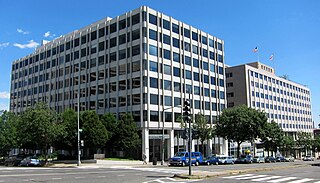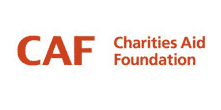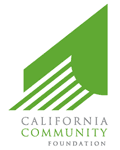Related Research Articles
Philanthropy is a form of altruism that consists of "private initiatives, for the public good, focusing on quality of life". Philanthropy contrasts with business initiatives, which are private initiatives for private good, focusing on material gain; and with government endeavors, which are public initiatives for public good, notably focusing on provision of public services. A person who practices philanthropy is a philanthropist.
A foundation is a category of nonprofit organization or charitable trust that typically provides funding and support for other charitable organizations through grants, but may also engage directly in charitable activities. Foundations include public charitable foundations, such as community foundations, and private foundations, which are typically endowed by an individual or family. However, the term "foundation" may also be used by such organizations that are not involved in public grantmaking.

The Philanthropy Roundtable is a nonprofit organization that advises conservative philanthropists.

Fundraising or fund-raising is the process of seeking and gathering voluntary financial contributions by engaging individuals, businesses, charitable foundations, or governmental agencies. Although fundraising typically refers to efforts to gather money for non-profit organizations, it is sometimes used to refer to the identification and solicitation of investors or other sources of capital for for-profit enterprises.

A charitable organization or charity is an organization whose primary objectives are philanthropy and social well-being.

A financial endowment is a legal structure for managing, and in many cases indefinitely perpetuating, a pool of financial, real estate, or other investments for a specific purpose according to the will of its founders and donors. Endowments are often structured so that the inflation-adjusted principal or "corpus" value is kept intact, while a portion of the fund can be spent each year, utilizing a prudent spending policy.
Matching funds are funds that are set to be paid in proportion to funds available from other sources. Matching fund payments usually arise in situations of charity or public good. The terms cost sharing, in-kind, and matching can be used interchangeably but refer to different types of donations.
The John M. Olin Foundation was a conservative American grant-making foundation established in 1953 by John M. Olin, president of the Olin Industries chemical and munitions manufacturing businesses. Unlike most other foundations, it was charged to spend all of its assets within a generation of Olin's death, for fear of mission drift over time and to preserve donor intent. It made its last grant in the summer of 2005 and officially disbanded on November 29, 2005. It had disbursed over $370 million in funding, primarily to conservative think tanks, media outlets, and law programs at influential universities. It is most notable for its early support and funding of the law and economics movement and the Federalist Society. "All in all, the Federalist Society has been one of the best investments the foundation ever made," wrote the Foundation to its trustees in 2003.
The Franklin W. Olin Foundation, founded as the Olin Foundation in 1938 by Franklin W. Olin, was an independent grantmaking foundation from its founding in 1938 until it spent down its corpus and closed down in 2005.
In the United States, a donor-advised fund is a charitable giving vehicle administered by a public charity created to manage charitable donations on behalf of organizations, families, or individuals. To participate in a donor-advised fund, a donating individual or organization opens an account in the fund and deposits cash, securities, or other financial instruments. They surrender ownership of anything they put in the fund, but retain advisory privileges over how their account is invested, and how it distributes money to charities.

The Charities Aid Foundation (CAF) is a registered UK charity that operates in the United Kingdom, the United States of America and Canada. It works with companies, private philanthropists, regular donors, fellow foundations, governments, charities and not-for-profit enterprises to enable them to give more. Its stated purpose is to “accelerate progress in society towards a fair and sustainable future for all.”

The California Community Foundation(CCF) is a philanthropic organization located in Los Angeles, California. Foundation Center, an independent nonprofit organization, ranks it among the top 100 foundations in the nation by asset size and total giving. Among all community foundations, CCF is 5th by total giving and 7th by asset size, as of the fiscal year that ended 6/30/12.
A foundation in the United States is a type of charitable organization. However, the Internal Revenue Code distinguishes between private foundations and public charities. Private foundations have more restrictions and fewer tax benefits than public charities like community foundations.
Until 1969, the term private foundation was not defined in the United States Internal Revenue Code. Since then, every U.S. charity that qualifies under Section 501(c)(3) of the Internal Revenue Service Code as tax-exempt is a "private foundation" unless it demonstrates to the IRS that it falls into another category such as public charity. Unlike nonprofit corporations classified as a public charity, private foundations in the United States are subject to a 1.39% excise tax or endowment tax on any net investment income.
The Commission on Private Philanthropy and Public Needs, better known as the Filer Commission, was formed in 1973 to study philanthropy, the role of the private sector in American society, and then to recommend measures to increase voluntary giving. Organized as a privately supported citizen's board, the Commission came into being through the efforts of John D. Rockefeller III, Wilbur D. Mills, George P. Shultz, and William E. Simon. The selection of participants on the Commission reflected a desire for diversity of experience and opinions and included heads of religious and labor groups, former cabinet secretaries, corporate and fd Foreign Securities Corporation and President of Metropolitan Museum of Art.
- Edwin D. Etherington, Former President of Wesleyan University and Trustee of Alfred P. Sloan Foundation.
- Bayard Ewing, Tillinghast, Collins and Graham and Vice Chairman of United Way of America.
- Frances Tarlton Farenthold, Past Chairperson of National Women's Political Caucus.
- Max M. Fisher, Chairman of United Brands Company and Honorary Chairman of United Foundations.
- Reverend Raymond J. Gallagher, Bishop of Lafayette-in-Indiana.
- Earl G. Graves, Publisher of Black Enterprise and Commissioner of Boy Scouts of America.
- Paul R. Haas, President and Chairman of Corpus Christi Oil and Gas Company and Trustee of Paul and Mary Haas Foundation.
- Walter A. Haas Jr., Chairman of Levi Strauss and Company and Trustee of the Ford Foundation.
- Philip M. Klutznick, Klutznick Investments and Chairman of Research and Policy Committee and Trustee of Committee for Economic Development.
- Ralph Lazarus, Chairman of Federated Department Stores, Inc. and Former National Chairman of United Way of America.
- Herbert E. Longenecker, President Emeritus of Tulane University and Director of United Student Aid Funds.
- Elizabeth J. McCormack, Special Assistant to the President of Rockefeller Brothers Fund, Inc.
- Walter J. McNerney, President of Blue Cross Association.
- William H. Morton, Trustee of Dartmouth College.
- John M. Musser, President and Director of General Service Foundation.
- Jon O. Newman, Judge, U.S. District Court and Chairman of Hartford Institute of Criminal and Social Justice.
- Graciela Olivarez, State Planning Officer and Director of Council on Foundations, Inc.
- Alan Pifer, President of Carnegie Corporation of New York.
- George Romney, Chairman of the National Center for Voluntary Action.
- William Matson Roth, Regent of University of California and Chairman of San Francisco Museum of Art.
- Althea T. L. Simmons, Director for Education Programs of the NAACP Special Contribution Fund.
- Reverend Leon H. Sullivan, Pastor of Zion Baptist Church, Philadelphia.
- David B. Truman, President of Mount Holyoke College.
National Philanthropic Trust (NPT) is an American independent public charity that provides philanthropic expertise to donors, foundations and financial institutions. NPT ranks among the largest grantmaking institutions in the United States.
UK Community Foundations (UKCF) is a registered charity that leads a movement of community foundations committed to positive social change in the UK through the development of “community philanthropy”. Community philanthropy involves people from all parts of a community working together locally to use the financial and other resources available to them to improve others’ lives.
Localgiving is a membership network and online fundraising platform dedicated to supporting local charities and community groups in the UK.

Philanthropy in the United States is the practice voluntary, charitable giving by individuals, corporations and foundations to benefit important social needs. Its long history dates back to the early colonial period, when Puritans founded Harvard College and other institutions. Philanthropy has been a major source of funding for various sectors, such as religion, higher education, health care, and the arts. Philanthropy has also been influenced by different social movements, such as abolitionism, women’s rights, civil rights, and environmentalism. Some of the most prominent philanthropists in American history include George Peabody, Andrew Carnegie, John D. Rockefeller, Henry Ford, Herbert Hoover, and Bill Gates,
References
- 1 2 Madoff, Ray D. (2010). Immortality and the Law: The Rising Power of the American Dead. New Haven, Conn.: Yale University Press. ISBN 978-0-300-12184-1.
- 1 2 3 4 5 6 7 8 9 Cain, Jeffrey J. (2012). Protecting Donor Intent: How to Define and Safeguard Your Philanthropic Principles. Washington, D.C.: Philanthropy Roundtable. ISBN 978-0-9851265-0-6.
- 1 2 Wooster, Martin Morse (2007). The Great Philanthropists and the Problem of "Donor Intent". Washington, D.C.: Capital Research Center. ISBN 978-1-892934-12-3.
- ↑ "Resources on Donor Intent". Center for Excellence in Higher Education. Archived from the original on 14 April 2013. Retrieved 6 March 2012.
- ↑ "Donor Intent Resource Library". Philanthropy Roundtable. Retrieved 6 March 2012.
- 1 2 Frumkin, Peter (2006). Strategic Giving: The Art and Science of Philanthropy. Chicago, Ill.: University of Chicago Press. ISBN 978-0-226-26626-8.
- ↑ Schramm, Carl (November–December 2007). "Examining the Role of Foundations in a Free Society". Philanthropy. Retrieved 6 March 2012.
- ↑ "Zogby America Adults 11/20/05 to 11/22/05" (PDF). Zogby International. Archived from the original (PDF) on 20 August 2008. Retrieved 7 March 2012.
- ↑ Meyerson, Adam (Fall 2009). "How Foundations Should and Should Not Be Held Accountable". Philanthropy. Retrieved 6 March 2012.
- 1 2 3 Rosenwald, Julius (May 1929). "Principles of Public Giving". The Atlantic Monthly.
- ↑ Turgot, Jacques (2008). "Endowments". In Amy Kass (ed.). Giving Well, Doing Good. Bloomington, Ind.: Indiana University Press. pp. 333–338. ISBN 978-0-253-21955-8.
- ↑ Ogden, Tim. "The Thorny Problem of Donor Intent". Philanthropy Action. Retrieved 6 March 2012.
- ↑ Nielsen, Waldemar (2000). "The Ethics of Philanthropy and Trusteeship; The Carnegie Foundation: A Case Study". In William F. May and A. Lewis Soens Jr. (ed.). The Ethics of Giving and Receiving: Am I My Foolish Brother's Keeper?. Dallas: SMU Press. pp. 96–107.
- 1 2 Sparks, Evan (Fall 2011). "Back to Bill". Philanthropy. Retrieved 7 March 2012.
- ↑ Gose, Ben (February 5, 2004). "Changes at Denver's Daniels Fund: Politics or Prudence?". Chronicle of Philanthropy.
- ↑ "Turning Passion into Action: Giving While Living" (PDF). Atlantic Reports. Atlantic Philanthropies. Archived from the original (PDF) on 13 April 2013. Retrieved 7 March 2012.
- ↑ Miller, John J. (2006). A Gift of Freedom: How the John M. Olin Foundation Changed America. San Francisco: Encounter Books. ISBN 1-59403-117-7.
- ↑ "Mission and Vision". Carnegie Corporation of New York. Retrieved 7 March 2012.
- 1 2 Sparks, Evan (Winter 2011). "Duke of Carolina". Philanthropy. Retrieved 7 March 2012.